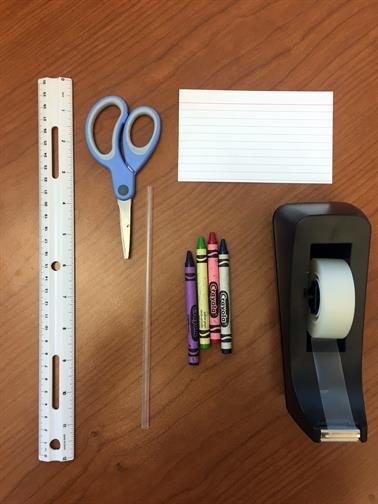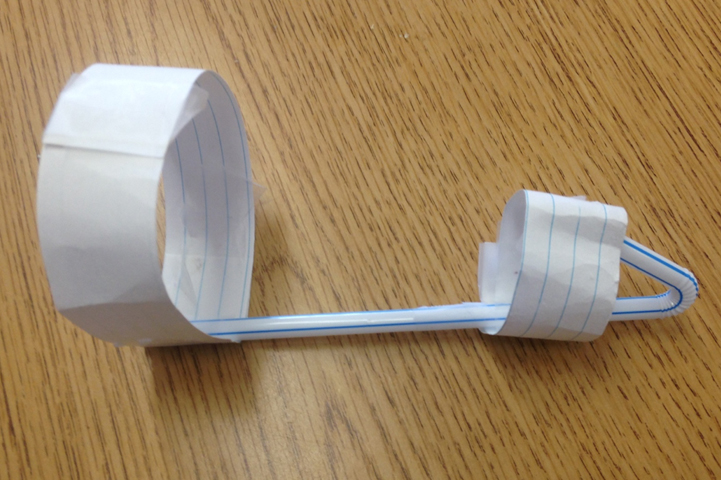Hoop Glider Challenge
Objective:
Students will learn how to build a standard hoop glider out of straws and paper, conduct testing, and then change different variables to determine the effect on flying distance.
About Hoop Gliders/How They Work:
- The straw glides through the air. That’s because the hoops act like wings. Things that fly—like birds and airplanes—all have wings. But wings are not all the same shape and size. Different wings can be better for different kinds of flight. For example, a hawk has long, wide wings that help it glide, while a hummingbird has short wings that flap quickly that help it hover in place.
- Forces — the force of gravity is a constant in our lives, always pulling us towards Earth. As the hoop glider shoots upward, the force of gravity pulls it back to Earth.
- Lift is created by the hoops that act like wings. Lift is used to stabilize and control the direction of flight.
- Drag or resistance from the air slows down the hoop glider.
- Forward thrust from throwing the hoop glider.
Materials:
- Index card 3” x 5” (1)
- Straight plastic drinking straw (1)
- Scissors
- Tape
- Ruler
- Crayons (if you would like to decorate)
Directions:
- Use crayons to decorate your index card.
- Cut index card into three separate pieces that measure 1 inch x 5 inches, using the scissors.
- Take two index card pieces and tape them together into a single large hoop. Overlap the pieces about one-half of an inch.
- Use the third piece to make a smaller hoop.
- Tape the paper hoops to the end of each straw (the straw is lined up on the insides of the hoops). Tape cannot block the straw openings.
- Hold the straw in the middle with the hoops on top and throw it into the air, similar to how you throw a dart, angled slightly up.
- Make changes to your hoop glider to have it soar a longer distance.
Test the hoop glider:
Extension:
- Changing a Variable
- A variable is any factor, trait or condition that can exist in differing amounts or types. An experiment usually has three kinds of variables: independent, dependent and controlled. In this extension, you will change the independent variable and see how it affects the dependent variable (distance flown). The controlled variable will stay constant (materials used, user throwing the hoop glider, etc.)
- You can change a variable, one at a time to see the effect on flying distance. Here are the following variables you can change:
- Length of straw (Ex: make it longer or shorter)
- Number of hoops (Ex: 1 hoop, 3 hoops, or 4 hoops)
- Size of hoops (Ex: both hoops small, or both hoops large)
- Position of hoops (Ex: move smaller hoop to middle of straw; move larger hoop to middle of straw; or position both hoops to be slightly more towards middle of straw)
- Once you see which variables help your hoop glider soar a longer distance, create one more hoop glider that uses a combination of changed variables to create the ultimate hoop glider. (Ex: longer straw, 3 hoops, extra-large hoop, etc.).

Quick Links
Where are Activities Available?
We partner with over 600 educational organizations.
See our school locator